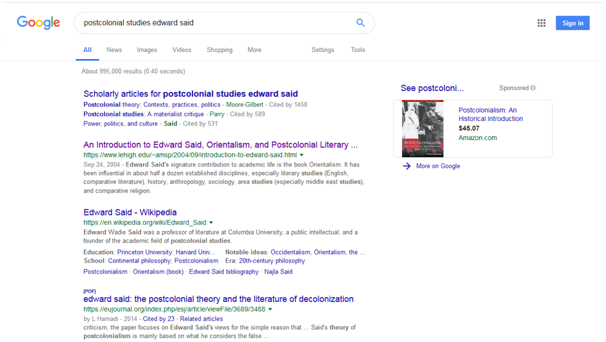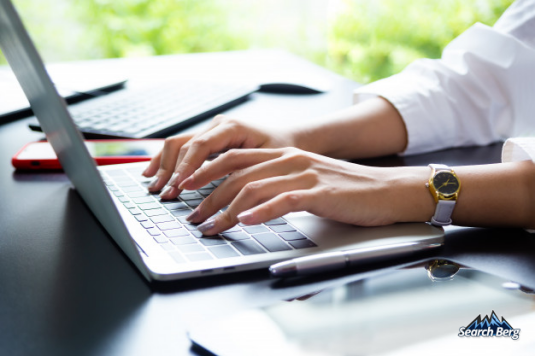Content Comprehensiveness for SEO – Are You Content With Your Content?
Contents
What is Content Comprehensiveness?
A Complete Guide to Content Comprehensiveness
In-Depth and Long-Form Content
Content Comprehensives for SEO: How Should I Get Started?
By now, the phrase “content is king” has become a chant in SEO circles. It’s omnipresent, unavoidable, and when it really comes to it, no one knows what it means.
While everyone knows in the abstract that Google rewards high-quality web content and penalizes subpar content, what does that really entail?
How does the algorithm decide between gold and lumps of coal?
To parse all of this systematically, it’s time to talk about content comprehensiveness for SEO!
What is Content Comprehensiveness?

Now it’s unfortunate, but Google’s actually quite coy about what they mean by this term. We have a hunch that it has a lot to do with not revealing how their secret sauce algorithm works. Actually, let’s append an ‘s’ to the end of algorithm.

The one that’s important to this article is Hummingbird. When it launched in 2013, it was hailed as groundbreaking in the way it leveraged machine learning. It allowed pages to rank even if they didn’t contain the exact keyword that people were searching for, focusing instead on the intent of the user.
It also penalized keyword stuffing and employed natural language processing capabilities to gain a rudimentary understanding of content quality.
In a nutshell, Google built Hummingbird from the ground up to ensure that all of a user’s needs were satisfied when they search for a keyword. This includes related keywords, how in-depth the content is, and how a site serves other content that users may want.
That being established, how do you go about making sure your content is as comprehensive as possible? We’re glad you asked!
A Complete Guide to Content Comprehensiveness
Did you see what we did with this title? Not only is it a nifty alliteration, but it’s also a great way to indicate to Google that this guide will give users everything they want.
If we went with “A Guide to Content Comprehensiveness,” it would not only sound generic (and remember, Google loathes generic content), it would also suggest that it’s just a basic guide, or that it doesn’t cover everything a user may need to know.
Remember, high-quality content, according to Google, covers more than just the one keyword a searcher types in.
User Intent
Let’s use an example to make sense of all this. Let’s say you’re an aspiring academic, looking to write a paper on Postcolonial Studies. Your professor told you that a professor who goes by the name of Edward Said is the who’s who of the field.
When you search his name on Google, a bunch of results show up; in fact, let’s take a look at what does crop up:

So, what kind of article did Google serve up?
The first two results are both overviews of who Edward Said is and what his work was on. This is because Google knows that a user who was already familiar with his work would search something more specific.
Don’t buy into almighty Google’s omniscience?
Here’s an example of another query we could have used:

The difference here is that we searched for a specific concept that the author has talked about. This indicates to Google that you’re more well versed with his work, and it provides us with both a link to his book and deep dives of him talking on YouTube.
This is what Google calls a user’s intent.
In-Depth and Long-Form Content

Now, let’s see what kind of content the first page provides.
The first thing you’ll notice is that it’s a long article. That’s a great place to start. Don’t be afraid to churn out long-form content when it’s required.
If you cover all the bases in your blog or article, it’ll rank a lot higher.

Whether you’re focusing on guest blogging or writing engaging product descriptions, incorporating SEO into your content marketing strategy will help your brand stand out from the crowd and climb SERPs.
Subtopics and Question Mining
One of the things the first result Google serves for “postcolonial studies edward said” does is that it covers a broad range of topics a user may want to learn about after learning about this author. It talks about people he was writing in reaction to (Rudyard Kipling, etc.) and other authors that talk about similar themes (Malcolm X, Frantz Fanon, etc.).
To Google, these are useful subtopics that not only make the page sound like an authority on the topic, but also give users a much broader spectrum to work with that will best serve their needs. These subtopics come from having a basic understanding of what questions a user might ask after reading a content piece.
So how are you supposed to predict what are useful subtopics and questions?
By using SEO keyword tools of course!
Two free ones that are very useful are Keywords Everywhere and Answer the Public. Both allow you query-specific keywords you want to be listed for, and provide you with related keywords, questions people who search for those keywords are asking for, as well as which ones you should prioritize based on search volume.
If there are too many keywords, you can even use them as ideas for future content, to make your website a true one-stop for customers. This greatly increases rankings as well.
Trends and YMYL

What else do you need to keep in mind?
Well, there are also trends and YMYL content.
For example, if you’re looking to buy a 4K OLED TV, Google will hold articles that give advice regarding one to a much higher standard. This is because these types of articles actually influence people to spend money.
YMYL stands for “your money, your life,” and Google doesn’t want to serve pages which will cause a customer any kind of financial loss. A good way to get ranked for such pages is to quote actual experts, or get a guest post written by someone who’s an established name in the industry.
Now it’s a known fact that TV sales skyrocket during the holiday season. It’s important to write specific content that’s geared toward this trend.
For example, you could feature a post on “The Best 4K OLED TV Deals This Holiday Season.” This topic not only covers 4K OLED TVs, but also keeps the seasonality of buying trends in mind.
To go back to the title of the article, it’s comprehensive!
Content Comprehensives for SEO: How Should I Get Started?
As one of the leading content marketing agencies across the US, we’re equipped with the resources and expertise to help you kick things off the right way. If you’ve been struggling to create a winning content marketing strategy, we’ll take you under our wing and help your business hit the ground running.
Our SEO content writers have extensive experience in producing focused and comprehensive content that keeps readers engrossed while covering all the bases.
Our SEO content marketing mix includes high-quality and optimized:
- Articles
- Blogs
- High DA (Domain Authority) Guest Blogs
- Infographics
- Press Releases
- Product Descriptions
- Service Pages
- Regional Pages
- Video Content
- Web Copywriting
Call 855-444-4777 to get started with content comprehensiveness! We’ll walk you through how content comprehensiveness can help SEO and create a winning strategy.












